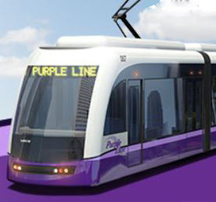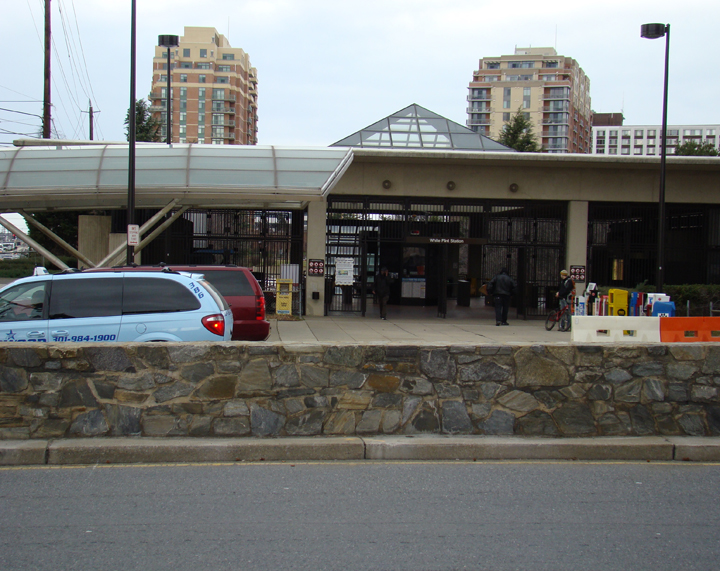Pedestrian Removal Disguised as “Pedestrian Safety” at White Flint
White Flint Metro station, as seen from the sidewalk approaching from the south along Rockville Pike. The sidewalk leads directly to the station entrance, but pedestrians are forced to detour 40 feet to the left, where cars stop, and wait at a very slow traffic light. |
In 1988 the Nuclear Regulatory Commission opened across the street from the White Flint Metro station. The Planning Board required a “traffic mitigation” program. As part of this program, the sidewalk in front of the NRC building was set back from Rockville Pike so that it led directly to the Metro. A marked crosswalk connected the sidewalk to the station entrance.
The traffic mitigation program worked very well; 36% of NRC employees commute by transit. As a result, the crosswalk was heavily used. But the Planning Board requirement expired in 2004. One year later, MCDOT removed the crosswalk and built a wall to stop pedestrians. The county claims that the crosswalk was eliminated in the interest of pedestrian safety.
This claim does not stand up to examination. The only hazard to pedestrians in the crosswalk was drivers who violated the law by failing to yield. But this hazard exists at all crosswalks in the county; at crossings without traffic lights, drivers rarely yield to pedestrians. The White Flint crosswalk was often full of people, so drivers obeyed the law and stopped more often than elsewhere. From the pedestrian's point of view, this was one of the safest unsignalized crosswalks (given the amount of car traffic) in the county.
MCDOT could have made it safer to cross the street by redesigning the road to slow traffic and ticketing drivers who failed to yield. But it did not do that. Instead it moved the pedestrians away.
The White Flint crosswalk is typical of MCDOT's policy of giving lip service to pedestrians while designing streets to move automobiles as quickly as possible. It was not removed to protect pedestrians. It was removed because so many pedestrians used it, and drivers were inconvenienced by their presence.
Return to main ACT pedestrian page.


